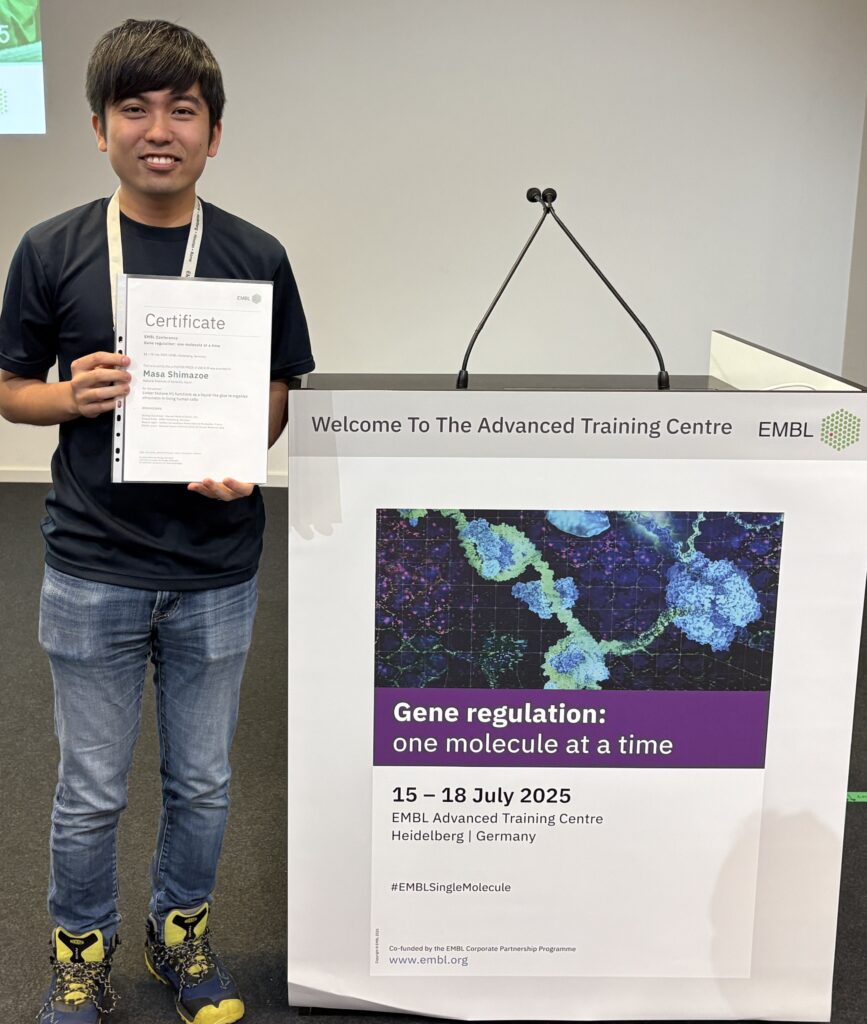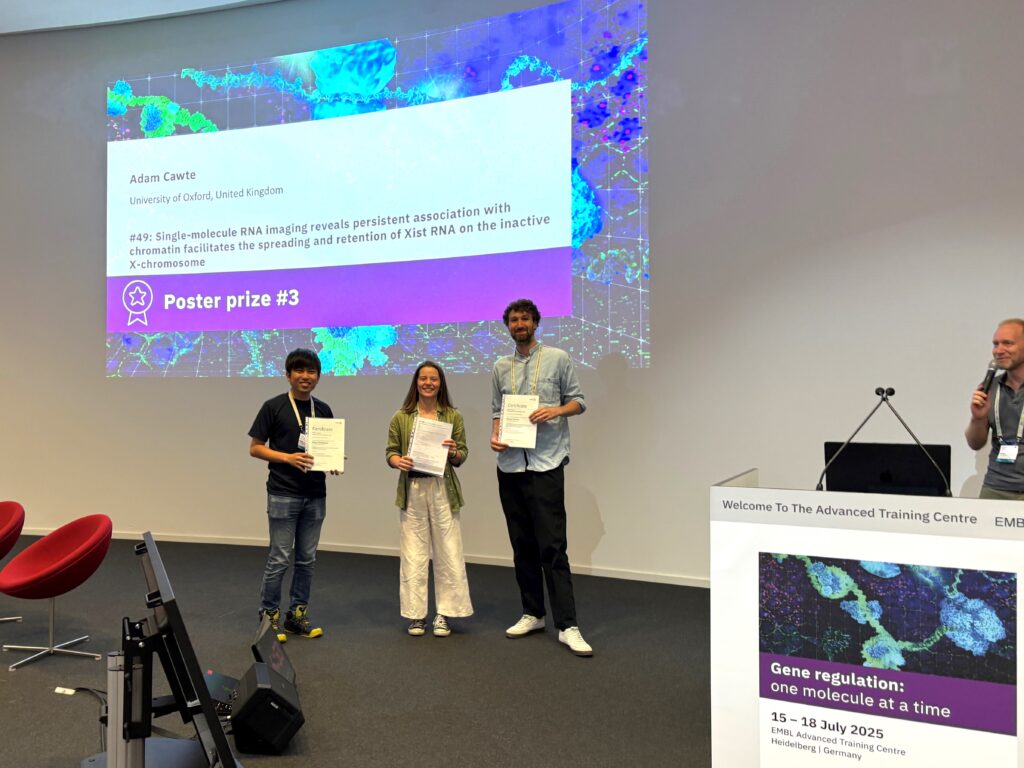Best poster prizes at ‘Gene regulation: one molecule at a time’
The EMBL Conference ‘Gene regulation: one molecule at a time‘ took place in July at EMBL Heidelberg and virtually.
The last few years have seen the independent emergence of microscopy and genomics technologies to monitor gene regulation processes with single molecule resolution. Recording the dynamic function of regulatory proteins on DNA and RNA now opens opportunities to understand key parameters of the process, such as kinetics, or how various activities are combined in vivo.
Our brand-new conference brought together pioneers of the single molecule microscopy and single molecule genomics fields, as well as theoretical biologists, to catalyse the emergence of a new generation of mechanistic models of gene regulation across each step of the central dogma.
For the inaugural edition of the meeting, we had 100 people attending on-site and 43 participants attending remotely. There were 10 fellowships provided by the EMBL Corporate Partnership Programme. With the total of 61 posters to view, we held two poster sessions during which the presenters could discuss their research — their work was then voted for by all participants. There were three poster prizes awarded during the meeting. We are pleased to share with you two of the winners’ abstracts!
Single molecule RNA imaging reveals persistent association with chromatin facilitates the spreading and retention of Xist RNA on the inactive X chromosome
Presenter: Adam Cawte
Authors: Adam Cawte, Guifeng Wei, Heather Coker, Mafalda Almeida, Flavia Constantinescu, Neil Brockdorff

University of Oxford, UK
Abstract:
X chromosome inactivation (XCI) is a mammalian dosage compensation mechanism that compensates for the disparity in X linked gene expression between XX females and XY males. During XCI in females, the majority of genes on one of the X chromosomes are epigenetically silenced. The master regulator of this process is the 18kb lncRNA, Xist, which spreads across the inactive X chromosome (Xi) in cis and subsequently recruits epigenetic modifiers to the Xi. Xist does this without significantly transferring to neighbouring chromosomes. How Xist achieves selectivity for the Xi whilst retaining efficient spreading is not fully understood.
Single molecule RNA imaging within the nucleus is challenging due to excess background fluorescence of nuclear localised MS2 capsid proteins. Therefore, we developed a method to significantly reduce this excess by using cytoplasmic retained capsid proteins. This improves signal to noise ratios and allows for the accurate detection and tracking of single Xist particles at fast frame rates with super resolved instant Structured Illumination Microscopy.
With this technique, we can dissect the different diffusive behaviours Xist RNA particles use when spreading across the Xi. We observe that the majority of Xist particles are chromatin associated, and their dynamics correlate well with the underlying movements of chromatin and DNA DNA contacts. We propose that Xist primarily spreads across the Xi via a series of “hand over” events between frequently interacting DNA loci. This model allows for Xist to spread efficiently during XCI whilst retaining selectivity for the Xi. Furthermore, we have investigated how key players involved in RNA tethering and stability affect Xist dynamics and spreading.
Linker histone H1 functions as a liquid like glue to organize chromatin in living human cells
Presenter: Masa Shimazoe
Authors: Masa Shimazoe, Satoru Ide, Sachiko Tamura, Kazuhiro Maeshima

National Institute of Genetics, Japan
Abstract:
Temperature exerts a universal influence on the developmental rates of diverse organisms, and challenges the robustness of development at species-specific thermal limits. However, comparably-sized organisms living in similar thermal environments can vary significantly in their developmental rates. This insight suggests a complex interplay between genetic and environmental mechanisms that control development. Here, we aim to explore the molecular and cellular mechanisms that drive dynamic differences in developmental pace of two ectothermic vertebrates, zebrafish and medaka. Leveraging the power of individual embryo sci-RNA-seq (single-cell combinatorial indexing), we have assembled a time-resolved developmental atlas of medaka from blastula to hatch, comprising over 1M cells from 1029 embryos at 19 developmental time points. Despite an evolutionary divergence time of more than 100 million years, medaka and zebrafish share a significant number of orthologous genes that direct the genetic program of development. These shared features enable integration of transcriptomic data across species to assess temporal differences in gene expression. This technique has allowed us to represent the developmental progression of both species – which takes ~3x longer in clock time for medaka – on the same latent developmental timescale. We find non-linear relationships in embryo-level developmental stages between species, and examine developmental trajectories of specific cell types that mirror this trend, using the notochord to identify species-specific variation in developmental dynamics within a cell lineage. This method will facilitate the systematic comparison of developmental progression in all cell types between the two species, and will enable analysis of developmental timing control mechanisms across diverse strains and species.

Find out more about the #EMBLSingleMolecule conference from the blog post written by Priyanka Yadav, who participated as an event reporter!
The EMBL Conference ‘Gene regulation: one molecule at a time‘ took place from 15 – 18 July 2025 at EMBL Heidelberg and virtually.